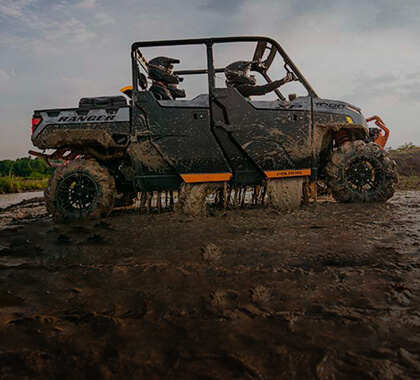When it comes to maintaining your Polaris Ranger, one of the most important areas to check is the braking system. Faulty brakes can be incredibly dangerous, and can result in accidents and injury. Here are some key things to look out for when buying Polaris Ranger brake replacement parts.
One common problem with the braking system is the brake sensors. If the switch operated by the brake pedal is not working properly, your Ranger may not start. Similarly, if your machine is low on brake fluid, it will not start either as there is not enough fluid to set the switch off. If you find yourself in a pinch or on the trail, you may be able to get your vehicle to start by unplugging and jumping the plug on the front of the master cylinder. Simply put some baling wire or another piece of metal across the connection to jump it, and you should be good to go.
Another issue people often face with the braking system is repairing ruptured brake lines. Fixing the brake lines can be straightforward if you have a helper. Simply pump the brakes and hold the brake pedal down while the other person opens the bleeder. Then, close the bleeder without the other person releasing the brake pedal. Repeat this process until the lines are bled, starting at the right rear and working your way to the left front. As a general rule, you should always start at the farthest point from the master cylinder and work your way closer.
If you have tried various methods to get your brakes working but still have no luck, there are a few other tricks to try. For instance, you could use a stick to push the pedal down and leave it overnight. Let it off, pump it, and repeat overnight again. Alternatively, you can hook up a hose on the bleeder, loosen the bleeder, and put the hose in a bottle of brake fluid. Pump away for a while then tighten up and see what you get. You might have to do it at all four corners at the same time if it doesn't work the first time. If the master cylinder went dry from the broken line and you pump the pedal with no fluid, you could damage the seals in the master cylinder.
If all else fails, don't hesitate to contact experts like Everything Polaris Ranger. They can walk you through the steps to get the brakes on your Full-Size Polaris Ranger functioning like they should.
In conclusion, regular maintenance of your Polaris Ranger braking system is crucial for safety. If you notice any issues, be sure to address them promptly by finding high-quality replacement parts and following proper repair guidelines.






